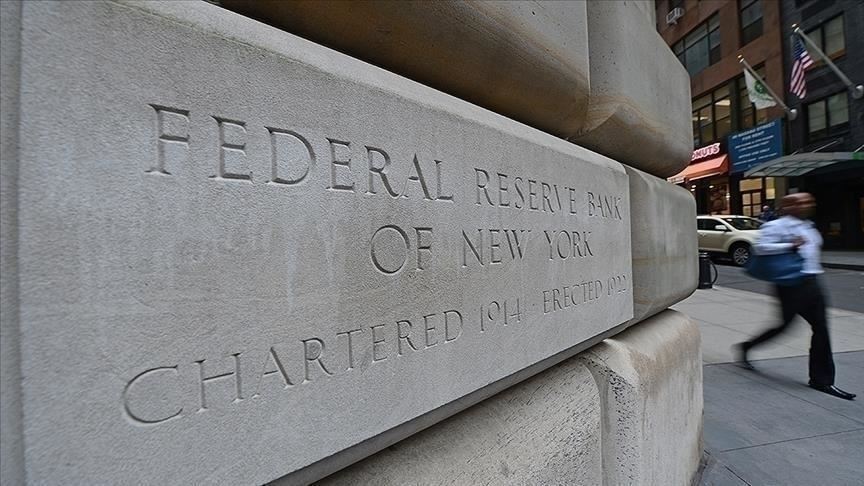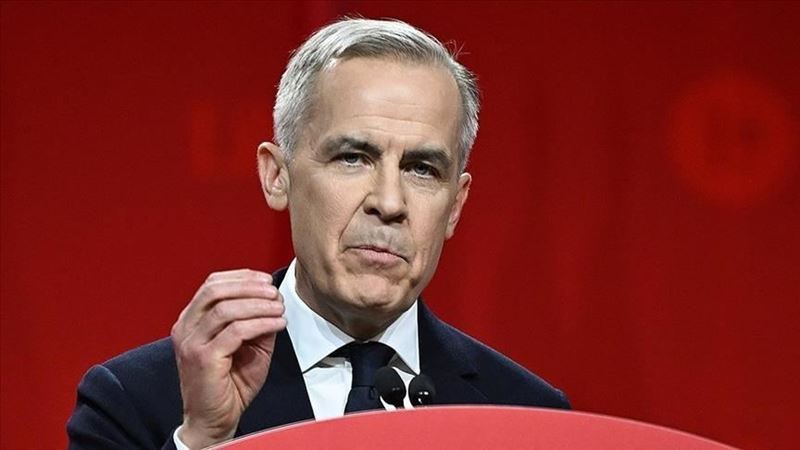As the inflation data announced last week in the USA exceeded expectations, it continues to confuse the markets, and the concern that the country's economy will enter a recession is getting stronger.
Although a 75 basis point increase in pricing in money markets is almost certain before the Fed's monetary policy decisions to be announced today, the sharp statements made by many bank officials against this step make pricing difficult.
The failure of market forecasts for inflation brought along the necessity of repricing expectations. On the other hand, the fact that sufficient data has not been released since the Friday the inflation rates were announced and the Fed's communication channels have not had the opportunity to function prevent these expectations from maturing.
Although 75 basis points of interest rate hikes are priced in the money markets, the Fed has different options to follow, forcing investors to be cautious. On the other hand, it is noteworthy that economists' median interest rate increase expectation is still 50 basis points in the surveys conducted by many institutions.
Accordingly, the Fed is likely to make relatively dovish statements with a 75 basis point interest rate hike, as well as a 50 basis point increase in interest rates and a much more hawkish stance since the 75 basis point increase was not verbally directed.
While it is priced in the money markets that there will be another 75 basis points increase in interest rates in at least one of the meetings in the rest of the year, it is estimated that the Fed's policy rate will be above 3.50 percent at the end of the year.
While the selling pressure in the bond markets with the said pricing continued yesterday, the 10-year bond yield of the USA is at 3.44 percent after seeing the highest level of the last 11 years with 3.50 percent. The inverting yield curve of the US 3, 5, 10 and 30-year bonds also continues this trend.
While the dollar index, which rose to 105.6, the highest level of the last 20 years, with the increasing demand for dollars, remained just above 105, while the ounce price of gold dropped to $1.805, the lowest level of the last month, with the effect of rising bond yields and the strong dollar, at 1.810 yesterday. watching dollars.
Bitcoin, which carries the downward trend for the sixth day in a row, is trading at the lowest level since December 2020 with $ 21,000.
With these developments, the S&P 500 index depreciated by 0.38 percent and the Dow Jones index by 0.50 percent in the New York stock market yesterday, while the Nasdaq index rose by 0.18 percent. Index futures contracts in the USA started the new day with a limited rise.
While inflation shows no signs of slowing down in Europe, bond yields continue to rise for five consecutive days.
Annual inflation in Germany increased by 7.9 percent in May, reaching its highest level since the winter of 1973-1974, when the first oil crisis occurred, while Germany's 10-year bond yield reached its highest level in the last eight years with 1.75 percent.
While the rise in German bond rates strengthened the selling pressure in the bond markets of the countries in the region, the 10-year bond yields of Italy, one of the most indebted countries in the region, to 4.17 percent continue to increase the risk perception for the region.
On the other hand, supply problems in energy, which is one of the main reasons for the increase in inflation in the region, continue to negatively affect the region by emerging one after another.
Russian energy company Gazprom stated that some of the gas compressors sent to the German Siemens company for maintenance have not yet returned, and warned that natural gas shipments through the Nord Stream pipeline will decrease by 40 percent. Accordingly, gas supply to the Nord Stream pipeline decreased to 100 million cubic meters per day, instead of the planned 167 million cubic meters per day.
While it was announced that production was interrupted for about 3 months due to the malfunction in the Freeport LNG terminal, from which the USA obtained 10 percent of the liquefied natural gas (LNG) sold to Europe, the natural gas contracts for July in Europe increased by 17 percent to 97 euros.
As a result of these developments, the selling trend in the regional equity markets was dominant, while the DAX 30 index was 0.91 percent in Germany, the FTSE 100 index was 0.25 percent in the UK, the CAC 40 index was 1.20 percent in France and the FTSE MIB 30 index in Italy. The index lost 0.32 percent. Index futures contracts in Europe started the new day with an increase.
Asian stock markets, on the other hand, followed a mixed course this morning. Chinese stock markets are mostly buying, with the macroeconomic data announced in China above expectations, the predictions that the People's Bank of China (PBoC) still has room to loosen its monetary policy, and the estimations that the regulations for technology companies have come to an end.
With the Bank of Japan (BoJ) increasing its bond purchases to protect its yield curve target, the Japanese yen's continued depreciation against the dollar raises questions about the sustainability of the bank's policies.
While the news flow that the tensions between the government and the BOJ may be tightened due to the rising food and energy prices before the elections in July, the uncertainties regarding the BOJ's meeting on Friday are increasing.
While the decline in the South Korean stock market exceeded 2 percent, the decision to leave one of the most important pop groups of the country, represented by Hybe, the second company with the highest weight in the Kospi index, was effective in the drop in question.
On the other hand, according to the macroeconomic data announced in the region, core machinery orders in Japan increased by 10.8 percent month on month, while industrial production in China rose by 0.7 percent month on month in May, far surpassing expectations. In China, the PBoC did not change the 1-year lending rate, while retail sales fell 6.7 percent year-on-year, but exceeded projections.
While the Nikkei 225 index lost 1.1 percent in Japan and 1.8 percent in South Korea, the Shanghai composite index gained 1.9 percent in China and the Hang Seng index in Hong Kong gained 1.5 percent. .
Domestically, the BIST 100 index in Borsa Istanbul, which followed a fluctuating course yesterday, closed the day at 2,508.91 points with a decrease of 0.5 percent.
Dollar/TRY, on the other hand, is trading at 17.2490 at the opening of the interbank market today, after closing at 17.2744 with an increase of 0.1 percent yesterday.
Analysts noted that today, in addition to the housing sales in the country, the Fed's interest rate decision abroad, industrial production and foreign trade statistics in the Euro Zone and retail sales data in the USA will be followed, the volatility in the markets may continue today.
Stating that investors should continue to act cautiously, analysts said that technically, 2.480 and 2.440 levels in the BIST 100 index stand out as support and 2.560 points as resistance.
The data to be followed in the markets today are as follows:
10.00 Turkey, house sales in May
12.00 Euro Area, industrial production and foreign trade deficit in April
15.30 US, June New York Fed manufacturing index
21.00 USA, Fed's interest rate decision
21.30 US, Fed Chairman Jerome Powell's press conference









Comments
No comment yet.